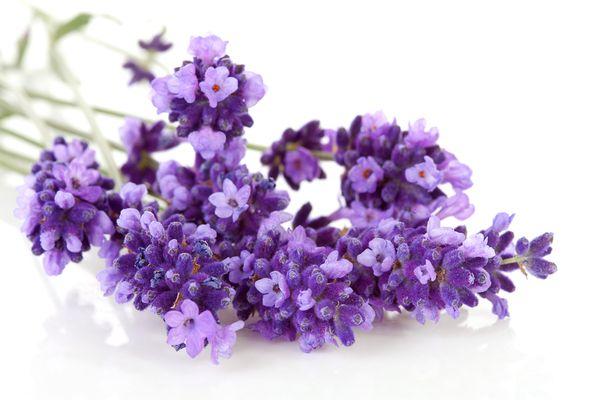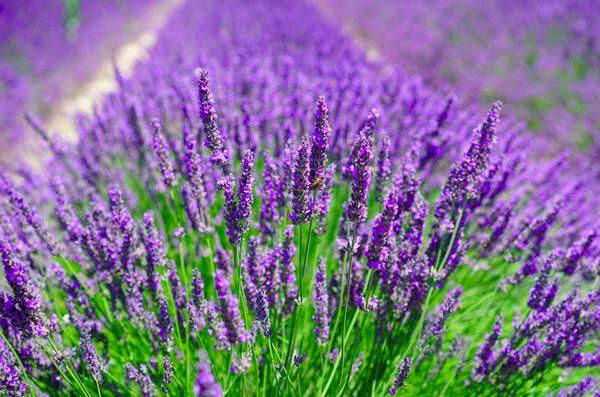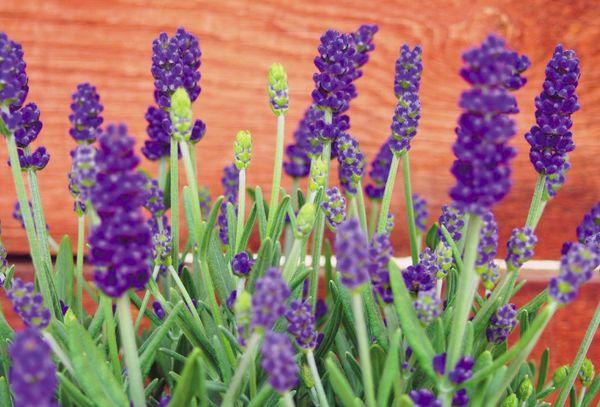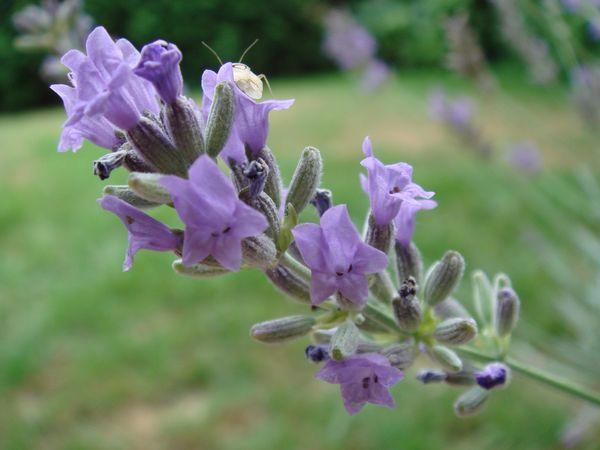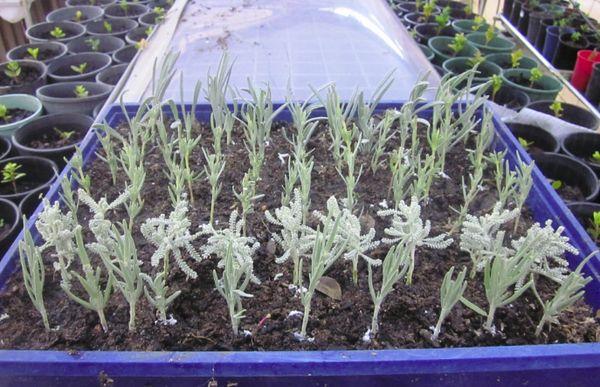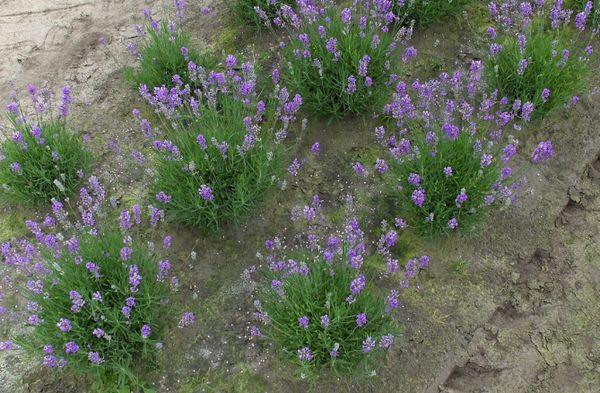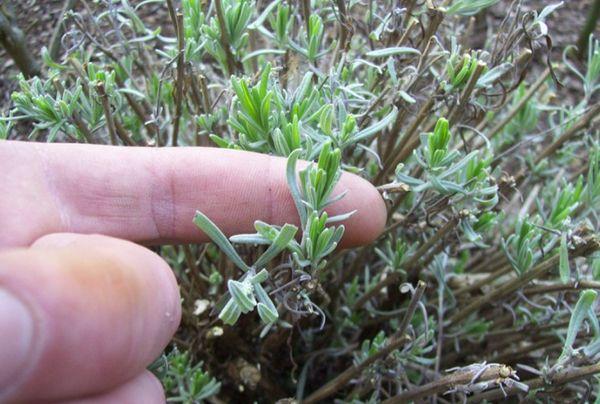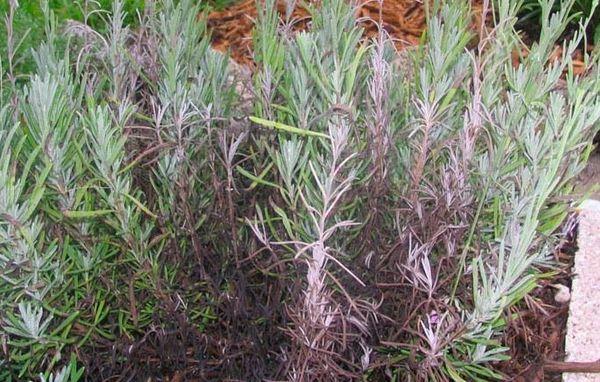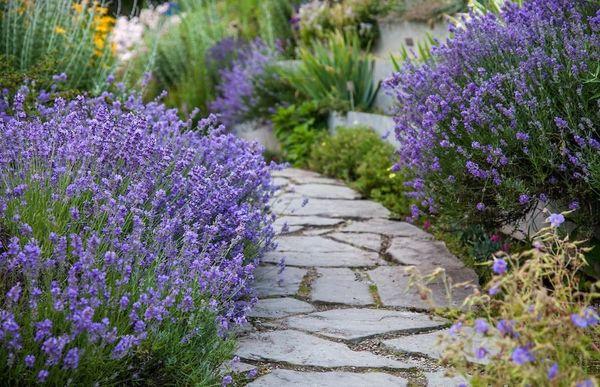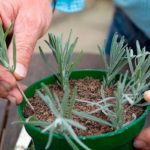Lavender has proven itself well and is popular because it is distinguished by its unpretentiousness and exquisite flowering, which provides the gardener with incredible beauty throughout the season. Planting and caring for lavender in open ground is of interest to many beginning gardeners and those who have taken a fancy to this beautiful crop.
- General information about the plant
- Varieties and varieties of lavender
- The subtleties of growing a flower
- Selecting a location
- When to plant
- Features of landing
- Tips for caring for lavender
- Tilling the soil near the bushes
- Watering mode
- Pruning lavender bushes
- Fertilizer application
- Preparing for winter
- Protection from diseases and pests
- Reproduction methods
- Application in landscape design
General information about the plant
Lavender is a perennial shrub of the Lamiaceae family, which captivates with its beauty, elegance, and delicate aroma. The plant forms a powerful taproot, woody root system and branched, erect stems. The bushes are decorated with oblong leaves with a solid or jagged edge.
Lavender flowers come in a variety of colors. At the end of tall thin peduncles there are 6-10 flowers, collected in false whorls, forming spike-shaped inflorescences. Upon completion of flowering, seeds are formed in the form of a dense, dry, oval-shaped seed with a dark brown color.
Varieties and varieties of lavender
There are 4 types of crops, of which several varieties are distinguished.
Lavender angustifolia (English). The bushes have a powerful fibrous root, reaching up to 2 m in length, and shoots with a woody part at the base. Lavender is decorated with linear leaves that differ in density, are slightly drooping, and colored green with a gray tint. It blooms in late summer with flowers collected in spike-shaped inflorescences.
The following varieties are used in gardening:
- Alba;
- Centiva Silver;
- Munstead;
- Rosea;
- Hidcote;
- Centiva Blue.
Lavender latifolia (French). This species has a strong aroma. Flowering occurs earlier than other species - in late spring. The inflorescences attract the attention of all kinds of flowers. The following varieties are distinguished:
- Helmsdale;
- Tiara;
- Rocky Road Regal Splendor;
- Willow Vale.
Hybrid lavender. This variety is called Dutch and can be grown for commercial purposes. Valued for its large bushes, reaching a height of 2 m, and silvery leaves. It pleases with its large oblong flowers in July.
The following varieties are popular:
- Richard Gray;
- Arabic;
- Grosso.
Lavender serrated. The plant is a medium-sized subshrub that is used for decorative purposes. It has earned its place in flower beds thanks to its soft green foliage with a gray tint and large fragrant inflorescences. The species is divided into the following varieties:
- Royal Crown;
- Pedundulata;
- Regal Splendour.
The subtleties of growing a flower
To get healthy blooming lavender in your garden or dacha, you need to choose the right place, know when to plant the crop, and how to plant the plant in open ground. And then you can admire the beautiful flower from May until late autumn.
Selecting a location
A guarantee of successful lavender cultivation is the correct location for planting. Therefore, it is important to know where to plant the crop. The plant loves open areas that are illuminated by the rays of the sun. The bushes can take root in the shade, but they will not delight you with abundant and long-lasting flowering. The lavender root system reacts sensitively to increased soil moisture. Therefore, you need to refuse to plant it in wetlands.
The plant is demanding on the level of acidity and soil structure. Before planting, add wood ash or lime to the soil; these substances will effectively reduce acidity. And to ensure porous soil, compost is systematically added to the flowerbed. Fertilizer will loosen the soil and enrich it with all the necessary nutrients.
When to plant
Sowing seeds in the ground should be done in October. Seeds are planted for seedlings in February or March. Seedlings are planted in the soil in the last days of May or in the first ten days of June.
Features of landing
Flowers can be grown not only from seedlings, but also from seeds. The seed method is more labor-intensive, so gardeners choose cultivation using seedlings.To do this, sow the seeds in late February - early March, so that the young shoots have time to get stronger before moving them into open soil.
Lavender seedlings should be planted at the end of May. Prepare planting holes in advance. An effective perception of the flower bed is created by maintaining an optimal viewing distance. During planting, maintain a distance between planting units of 80-90 cm for compact varieties, and 120 cm for tall hybrids. The depth of the recesses depends on the size of the roots of the seedlings.
Place the seedlings in a hole, straightening the roots, and fill in the lavender so that its root neck is buried 5-6 cm, then water generously.
If the flower bed is located in areas where a warm climate prevails, then lavender can be grown using seeds. For this purpose, winter sowing is used, which involves planting seeds in the soil in October. Planting material should be sown to a depth of 3-4 cm, and the soil on top should be compacted. Watering is necessary during dry autumn weather. In winter, cover the flowerbed with snow.
Tips for caring for lavender
In order for lavender to remain beautiful and healthy for a long time, it is necessary to properly and promptly care for the plant and implement all agricultural techniques.
Tilling the soil near the bushes
Lavender does not grow well in dense soils. Its roots require good air circulation. Weeds also need to be removed as they can choke out young shrubs. Loosening the soil and weeding are mandatory procedures for caring for the crop.
Watering mode
With water, the crop receives all the nutrients for normal growth and flowering, so lavender should be systematically watered abundantly, especially in hot, dry weather.
Pruning lavender bushes
When growing lavender, annual pruning is required. When flowering is complete, cut off the faded inflorescences. This will help stimulate more active and prolonged flowering and give the flowers a decorative appearance. In the autumn, shorten the branches to maintain compactness, and also to prevent them from breaking under the snow and freezing in harsh winter conditions.
Bushes at the age of 10 years can be rejuvenated by cutting the shoots 5-10 cm from the ground surface in the fall.
Fertilizer application
Perennial lavender is very responsive to fertilizing. It is important to observe the dose when applying fertilizers. Use only complex mineral supplements. Add them before flowering, concentration - 2 tbsp. l. for 10 liters of water. Water the bushes with the prepared mixture.
Preparing for winter
Preparing lavender for a cold winter includes a series of measures that will allow the plant to cope with the harsh conditions of the middle zone. The flower does not tolerate winters with little snow and temperatures dropping to -25 degrees, so you should take care of its reliable shelter. To do this, at the end of the season, before wintering, trim the bushes of the plant and build a shelter from the branches of coniferous trees.
Protection from diseases and pests
During the growing process, gardeners are faced with a disease such as gray rot, the development of which can be triggered by regular stagnation of liquid in the soil due to improper watering or prolonged rains. This disease has no cure. Therefore, the infected bush must be dug up and burned.
Lavender is also not immune to pest attacks. The plant can be favored by rainbow beetles and slobbering pennies. These insects can be collected by hand, as well as changing the mulch and treating the shrubs using special insecticides.
Reproduction methods
Lavender is grown from seeds and propagated by dividing the bush, layering and cuttings:
- Propagation by cuttings. To do this, cut cuttings 8-10 cm long from the shoot. Plant for rooting in loose, moist soil, deepening the lower cut by 2-3 cm, and cover using jars. It is necessary to cover until the cuttings form roots.
- Dividing the bush. At the initial stage, the selected plant should be prepared. In autumn, trim a powerful, healthy shrub at a height of 10 cm and hill it, filling all the space between the branches. In the spring, repeat the hilling. During the summer, the bush will sprout. And then in the fall it can be dug up, divided into parts with well-developed roots and stems, and planted.
- Reproduction by layering. In the spring, bend back the lavender shoots and place them in holes, the depth of which is 3-4 cm, and sprinkle with soil. Water throughout the summer period, and in the spring, remove the shoots that have taken root from the bush and plant them in a permanent place.
Application in landscape design
There are many ideas for decorative flower beds in landscape design. Lavender will harmoniously complement the landscape near the house with its colors, exquisite blooms and incredible beauty. Bushes look gorgeous in rock gardens and mixborders. They are given a place in the center of the flowerbed, where they are clearly visible from all sides.
Varieties characterized by tall growth can be planted in small groups, for example, on alpine hills.At the same time, just do not disturb the design of the mountain landscape and choose your neighbors wisely.
Lavender looks elegant as a border decorating an alley in the garden. A frame of flowers allows you to divide the garden into zones. The plant will also look good next to elegant standard roses.
A carpet of flowers can become an original garden decoration. To do this, determine the height of the bushes in advance and systematically trim them at the same level.
Growing lavender is not difficult even for novice gardeners. And with proper planting and proper care, the evergreen perennial will decorate flower beds in the garden for a long time.

